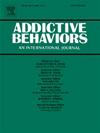The longitudinal association between family functioning and problematic social media use among Chinese university students: Mediation via loneliness and a subgroup analysis by sex
IF 3.7
2区 医学
Q1 PSYCHOLOGY, CLINICAL
引用次数: 0
Abstract
Globally, problematic social media use (PSMU) is becoming increasingly common among university students. There is, however, a dearth of longitudinal studies investigating family functioning, loneliness, and PSMU. Based on the model of compensatory internet use, this study investigated the hypothesis that loneliness would mediate the longitudinal association between family functioning and PSMU among Chinese university students. It also explored whether there were sex differences in the associations between family functioning, loneliness, and PSMU. A total of 928 university students (45.7% male and 54.3% female; Mage = 20.71 years, SD = 1.21) completed the two-wave surveys. The Bergen Social Media Addiction Scale, the Chinese 6-item short version of the UCLA Loneliness Scale, and the Family APGAR Index were employed to evaluate PSMU, loneliness, and family functioning, respectively. Cross-lagged panel model analysis and multi-group analysis by sex were conducted. The study found that family functioning at T1 negatively predicted loneliness at T2 (β = -0.10, p = 0.001) and PSMU at T2 (β = -0.12, p < 0.001). Loneliness at T1 positively predicted PSMU at T2 (β = 0.13, p < 0.001). Loneliness significantly mediated the longitudinal association between family functioning and PSMU. Significant sex differences were found in the paths from loneliness at T1 to PSMU at T2 and from family functioning at T1 to PSMU at T2, with these associations being stronger in males than in females. The findings suggest that interventions aimed at enhancing family communication and emotional cohesion could be effective in reducing both loneliness and PSMU among university students.
中国大学生家庭功能与社交媒体使用问题的纵向关联:孤独感和性别亚组分析的中介作用
在全球范围内,大学生社交媒体使用问题(PSMU)正变得越来越普遍。然而,关于家庭功能、孤独和PSMU的纵向研究却很缺乏。本研究基于代偿性网络使用模型,探讨孤独感在家庭功能与大学生网络行为行为的纵向关联中起中介作用的假设。该研究还探讨了家庭功能、孤独感和PSMU之间的关联是否存在性别差异。在校大学生928人(男45.7%,女54.3%);年龄≥20.71岁,SD = 1.21)完成两波调查。采用卑尔根社交媒体成瘾量表、中文6项短版UCLA孤独感量表和家庭APGAR指数分别评估PSMU、孤独感和家庭功能。进行了交叉滞后面板模型分析和多组性别分析。研究发现,T1的家庭功能负向预测T2的孤独感(β = -0.10, p = 0.001)和T2的PSMU (β = -0.12, p <;0.001)。T1孤独感正预测T2 PSMU (β = 0.13, p <;0.001)。孤独感在家庭功能与PSMU的纵向关联中起显著中介作用。从T1孤独感到T2 PSMU和从T1家庭功能到T2 PSMU的路径存在显著的性别差异,且这些关联在男性中强于女性。研究结果表明,旨在加强家庭沟通和情感凝聚力的干预措施可以有效地减少大学生的孤独感和PSMU。
本文章由计算机程序翻译,如有差异,请以英文原文为准。
求助全文
约1分钟内获得全文
求助全文
来源期刊

Addictive behaviors
医学-药物滥用
CiteScore
8.40
自引率
4.50%
发文量
283
审稿时长
46 days
期刊介绍:
Addictive Behaviors is an international peer-reviewed journal publishing high quality human research on addictive behaviors and disorders since 1975. The journal accepts submissions of full-length papers and short communications on substance-related addictions such as the abuse of alcohol, drugs and nicotine, and behavioral addictions involving gambling and technology. We primarily publish behavioral and psychosocial research but our articles span the fields of psychology, sociology, psychiatry, epidemiology, social policy, medicine, pharmacology and neuroscience. While theoretical orientations are diverse, the emphasis of the journal is primarily empirical. That is, sound experimental design combined with valid, reliable assessment and evaluation procedures are a requisite for acceptance. However, innovative and empirically oriented case studies that might encourage new lines of inquiry are accepted as well. Studies that clearly contribute to current knowledge of etiology, prevention, social policy or treatment are given priority. Scholarly commentaries on topical issues, systematic reviews, and mini reviews are encouraged. We especially welcome multimedia papers that incorporate video or audio components to better display methodology or findings.
Studies can also be submitted to Addictive Behaviors? companion title, the open access journal Addictive Behaviors Reports, which has a particular interest in ''non-traditional'', innovative and empirically-oriented research such as negative/null data papers, replication studies, case reports on novel treatments, and cross-cultural research.
 求助内容:
求助内容: 应助结果提醒方式:
应助结果提醒方式:


